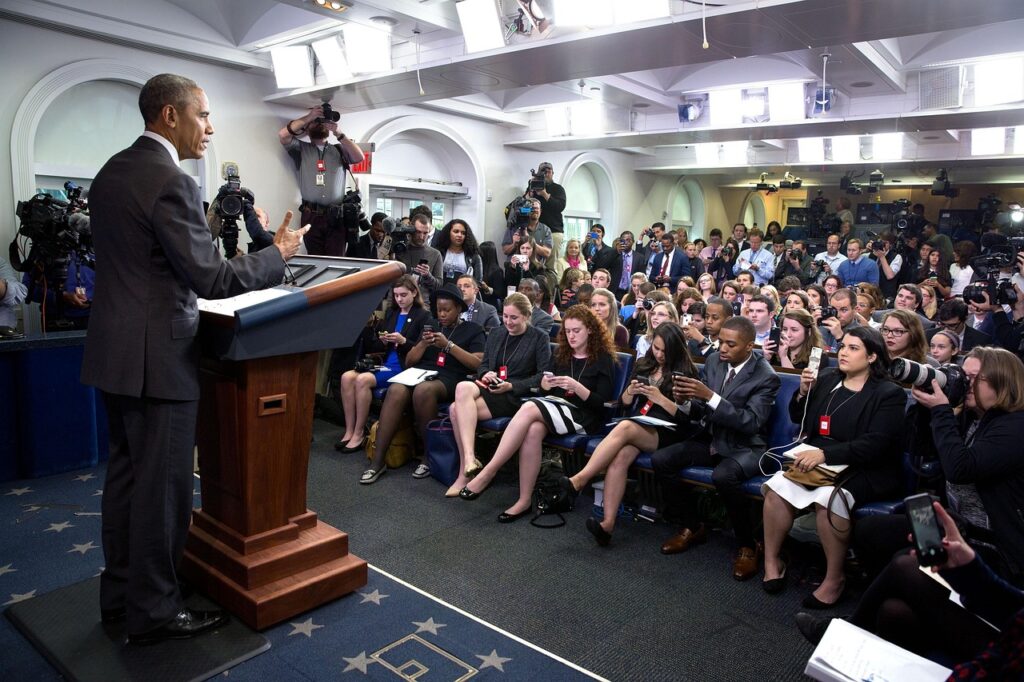How Keynote Speakers Create Emotional Connections That Ordinary Presentations Can’t
The difference between a memorable keynote address and a forgettable corporate presentation extends far beyond speaking skills or subject matter expertise. Elite keynote speakers understand that true impact occurs when they forge genuine emotional connections with their audiences, transforming passive listeners into engaged participants who carry the message long after the applause fades.
The Psychology Behind Emotional Connection
Neuroscience research reveals that emotional engagement activates multiple regions of the brain simultaneously, creating stronger memory formation and deeper retention than purely logical presentations. When keynote speakers tap into emotions, they trigger the release of neurochemicals like oxytocin and dopamine, which enhance focus, empathy, and the likelihood that audiences will act upon the presented ideas.
This biological response explains why audiences remember the feeling of a great keynote long after they’ve forgotten specific statistics or bullet points. Exceptional speakers leverage this understanding to craft experiences that resonate on both intellectual and emotional levels, creating what psychologists term “peak moments” that leave lasting impressions.
The emotional brain processes information significantly faster than the rational mind, meaning audiences form emotional responses to speakers within the first few seconds of contact. This immediate connection—or lack thereof—often determines the entire trajectory of the presentation’s impact.
Vulnerability as a Gateway to Connection
The Power of Authentic Disclosure
Master keynote speakers understand that vulnerability serves as a bridge to audience hearts and minds. By sharing personal struggles, failures, and moments of uncertainty, they create psychological safety that allows audiences to relate on a human level rather than maintaining the typical speaker-audience hierarchy.
This vulnerability manifests in different ways: acknowledging professional setbacks, sharing family challenges that shaped perspective, or admitting moments of doubt about career decisions. The key lies in strategic vulnerability—sharing enough to create connection whilst maintaining professional credibility and relevance to the core message.
Audiences instinctively recognise authentic vulnerability versus manufactured emotion. Genuine speakers draw from real experiences, allowing natural emotion to emerge rather than performing predetermined emotional beats. This authenticity creates trust, which becomes the foundation for deeper engagement and message retention.
Balancing Strength and Relatability
Effective keynote speakers master the delicate balance between demonstrating expertise and remaining accessible. They position themselves as fellow travellers rather than distant authorities, sharing wisdom gained through experience whilst acknowledging ongoing learning and growth.
This approach differs markedly from traditional presentations where speakers maintain emotional distance to project authority. Keynote masters recognise that modern audiences crave connection over perfection, preferring speakers who demonstrate competence through journey rather than untouchable expertise.
Storytelling Techniques That Transcend Information Transfer
Narrative Architecture for Emotional Impact
Exceptional keynote speakers structure their presentations as emotional journeys rather than information downloads. They employ classic narrative techniques—character development, conflict, resolution, and transformation—to create compelling experiences that audiences follow naturally.
The most powerful keynote stories feature protagonists facing relatable challenges, encountering obstacles that mirror audience experiences, and ultimately discovering insights or solutions that listeners can apply to their own situations. This narrative framework transforms abstract concepts into concrete, memorable experiences.
Skilled speakers also understand the importance of sensory details in storytelling. Rather than simply stating facts, they paint vivid pictures using sight, sound, touch, and emotion, allowing audiences to experience stories rather than merely hear them. This technique activates mirror neurons in listeners’ brains, creating empathetic responses that deepen connection.
The Strategic Use of Pause and Pace
Master keynote speakers manipulate timing and rhythm to enhance emotional impact. Strategic pauses allow audiences to process emotional content, whilst varied pacing creates dynamic energy that maintains attention and emphasises key moments.
The pregnant pause before delivering a crucial insight, the deliberate slowing of speech during vulnerable moments, or the quickening pace during exciting discoveries—these techniques demonstrate how keynote speakers use silence and rhythm as tools for emotional manipulation in service of their message.
Physical Presence and Energetic Connection
Beyond Words: The Language of the Body
Elite keynote speakers understand that emotional connection extends far beyond verbal communication. Their physical presence, gesture patterns, facial expressions, and stage movement all contribute to the emotional atmosphere they create with audiences.
Confident, open postures invite connection, whilst authentic facial expressions mirror the emotions being discussed, creating congruence between message and messenger. Purposeful movement across the stage can create intimacy through proximity or emphasise points through strategic positioning.
The most skilled speakers also mirror audience energy, reading the room’s emotional temperature and adjusting their physical presence accordingly. They might increase energy to lift a tired afternoon crowd or create intimate moments through softer gestures and closer proximity.
Creating Collective Energy
Exceptional keynote speakers recognise that audiences are not collections of individuals but rather collective entities with shared energy and emotion. They deliberately create moments that unite the audience in shared experience—collective laughter, moments of reflection, or group participation.
These shared emotional moments create what psychologists call “collective effervescence,” a feeling of unity and connection that extends beyond the individual speaker-audience relationship. Audiences begin to feel connected not only to the speaker but to each other, amplifying the emotional impact of the experience.
The Art of Universal Themes Through Personal Lens
Finding Common Ground in Unique Experience
Masterful keynote speakers identify universal human experiences within their personal stories. Themes like overcoming adversity, dealing with change, finding purpose, or building relationships resonate across demographics, industries, and cultures.
The skill lies in presenting these universal themes through highly specific, personal examples that feel both unique and relatable. Rather than speaking in generalities about “challenges,” they describe specific moments of difficulty that illuminate broader truths about human resilience or growth.
This specificity paradoxically increases universality, as audiences connect more readily with detailed, authentic experiences than with vague, generalised statements. The concrete details make stories memorable whilst the underlying themes provide transferable wisdom.
Cultural and Contextual Sensitivity
Exceptional keynote speakers adapt their emotional appeals to match audience contexts whilst maintaining message authenticity. They research audience backgrounds, industry challenges, and cultural norms to ensure their emotional connections feel relevant rather than imposed.
This sensitivity extends to understanding generational differences, professional pressures, and regional characteristics that might influence how audiences receive and respond to emotional content. The best speakers make audiences feel seen and understood, not manipulated or pandered to.
Building Anticipation and Managing Energy
The Emotional Arc of Great Keynotes
Master speakers architect the emotional journey of their presentations, creating peaks and valleys of intensity that maintain engagement whilst allowing audiences to process complex emotions. They understand that sustained high emotion becomes exhausting, whilst consistent low energy creates disengagement.
The most effective keynotes often begin with relatability, build tension through challenge or conflict, reach emotional peaks during revelation or insight, and conclude with inspiration or call to action. This structure mirrors natural storytelling patterns that audiences intuitively follow.
Strategic emotional pacing also includes recovery moments—brief interludes of humour, reflection, or lighter content that allow audiences to process intense emotional material before building to the next peak.
Managing Audience Emotional State
Skilled keynote speakers continuously monitor and adjust audience emotional state throughout their presentations. They recognise signs of emotional fatigue, confusion, or disconnection and adjust their approach accordingly.
This might involve shifting energy levels, introducing interactive elements, or acknowledging audience state directly. The best speakers make these adjustments seamlessly, maintaining the presentation flow whilst ensuring optimal audience engagement.
Technology and Modern Connection Strategies
Digital Age Adaptations
Contemporary keynote speakers must create emotional connections across various formats—live events, virtual presentations, hybrid audiences, and recorded content. Each format requires different strategies for maintaining emotional engagement.
Virtual presentations demand heightened energy, more direct eye contact with cameras, and creative ways to create intimacy through screens. Hybrid events challenge speakers to connect simultaneously with in-person and remote audiences, requiring sophisticated awareness and adaptation skills.
Authentic Connection in Artificial Environments
The proliferation of digital communication has paradoxically increased audience hunger for authentic human connection. Keynote speakers who can create genuine emotional bonds through technology gain significant competitive advantage.
This authenticity often involves acknowledging the artificial nature of digital formats whilst working to transcend their limitations through enhanced storytelling, increased interaction, and more intimate communication styles.
Measuring Emotional Impact Beyond Applause
Long-term Indicators of Connection
The true measure of keynote emotional impact extends beyond immediate audience response. Speakers who create genuine connections see increased social media engagement, higher rates of post-event contact, and more speaking referrals.
Long-term impact also manifests in behaviour change among audience members—implementation of suggested strategies, career pivots inspired by presentations, or continued engagement with the speaker’s content and ideas.
Conclusion: The Lasting Power of Human Connection
The most exceptional keynote speakers understand that their ultimate goal transcends information delivery or entertainment. They strive to create transformational moments that shift perspectives, inspire action, and leave audiences feeling more connected to their own potential and purpose.
This emotional connection differentiates keynote speaking from ordinary presentations, transforming one-way communication into shared human experience. Speakers who master this art don’t just inform or motivate—they create lasting change through the power of authentic human connection.









